For Debbie.
I am a Louisiana girl. That means I like football, music, and boats (both power and sail). It means I am stubborn, passionate, empathetic, and over the top. It means I think that anything can be solved over a good meal and conversation… lots of conversation. It also means that I love food.
Love. Like, in a spiritual way.
That is simply how people from Louisiana feel about food. Even those among us who don’t cook, eat. And eat with zeal.
My stepmother, also a Louisiana girl, epitomized this. She loved to cook, she loved to talk, and she loved to host. She solved problems, and she created love.
Our lives intersected late in life and I was her only child, arriving on her doorstep as a needy 12-year-old. This made things, well, complicated, but we both changed for the better as a result. I say this with no sense of hyperbole – she told me, numerous times, that I saved her life. I didn’t tell her, but she saved mine too. And my dad’s.
Debbie was a remarkable cook. She learned from her mother and father as one of 7 children in a German-Cajun family. As a result she regularly made Roast Beef, Smoked Chicken and Sausage Gumbo, Shrimp and Mirliton Casserole, Potato Salad, Spinach Madeline, Shrimp Bisque, Vegetable and Beef Soup (for which she famously used the best cuts of sirloin causing vexation among butchers from Baton Rouge to London).
Debbie taught me things about life, about love and about being a woman. She taught me things I hope to pass on to my children – like the benefits of therapy, nice handwriting, how to be gracious, and the therapeutic benefits of keeping a fastidiously clean house.
She was also a difficult character at times; giving all there was of her to give but still retaining and maintaining a tough outer shell. She had a raspy voice, a wicked sense of humor, and, though she loved to travel, she felt most at home in the 200-year-old Acadian cabin in the middle of the woods that she and my father shared.
I learned much about life from Debbie but mostly to strike out and be my own person—from bottom to top. This was especially important in the kitchen. We had different styles and different things drove us. Her, to replicate and perfect her family’s sacred recipes; me, to strike out and create things I never thought I could create.
Until her death she remained the best home cook I ever met and I would have put her up against any professional chef I had ever worked with including a legion of them from my culinary school for dishes with pure soul and of classic regional cuisine.
After I moved to New York my visits home revolved around food. It was usually a creole extravaganza: Crawfish pie, Barbeque Shrimp, Gumbo, Etouffee, Fried Catfish, Oyster and Artichoke Soup. She would always say that we would cook together. She would promise to buy the ingredients and then wait for me to arrive and I could learn to make her very best dishes. Inevitably, however, that isn’t what would happen. I would return home, visit friends, stay out too late, sleep in and wake up to the rich aromas of a chocolate brown roux wafting through the air. I’d hear the clanging of metal bowls as she separated shrimp heads from bodies and peelings. Thwack! Thwack! Thwack! I would hear her cutting onions, bell pepper and celery and piling them into large mounds to make their way into the ancient cast iron pot bubbling away on the stove. Dinner would be served early and I would do my best to eat enough to sustain me for another five months away. She would beam with pride as I went after seconds or thirds and still made room for dessert. I would leave with no recipe, no understanding of how she did it but I would feel warm and loved for days.
After I completed culinary school, married and moved home to New Orleans our visits were still about food but it wasn’t always creole. She started to attempt new dishes. She started looking for ideas in magazines, on television and in cookbooks during multi-hour-long visits at the bookstore. She would pull recipes out of magazines, off of the Internet, or make notes about something she had seen on television and we would discuss over the phone, then in person, tackling it during our next visit.
One day, about two years after she died from a massive heart attack suffered while at work, I was cleaning out a bookshelf at my dad’s house. There was a cookbook I had given her years before that was no longer in print and I no longer had a copy. I was absentmindedly tracing my finger along the spine and thinking about the meal she and I had shared at that restaurant when I caught sight of a few papers shoved behind some books. I started pulling them out and before I knew it I had a stack of nearly 40 recipes. Her collection of favorites, her personal recipes for Roast with Rice & Gravy, Stuffed Bell Peppers, Crawfish Pie, Crab & Brie Soup, Shrimp Creole.
I thought I had missed my opportunity. I thought I would never again have the chance to know what she knew, to learn anything else from her, to stand with her in the kitchen. To ask her questions. To live with her. And from nowhere, from daydreaming next to a dusty old bookshelf in the corner of her and my dad’s old house, I found the heart and soul of her cooking.
Buried within that pile was a recipe I had given her years before while I was studying at The French Culinary Institute. It was one of the first recipes I had ever written. I do not know if she had ever tried her hand at it but I know she would have mastered it with ease: Mushroom and Sage Risotto.
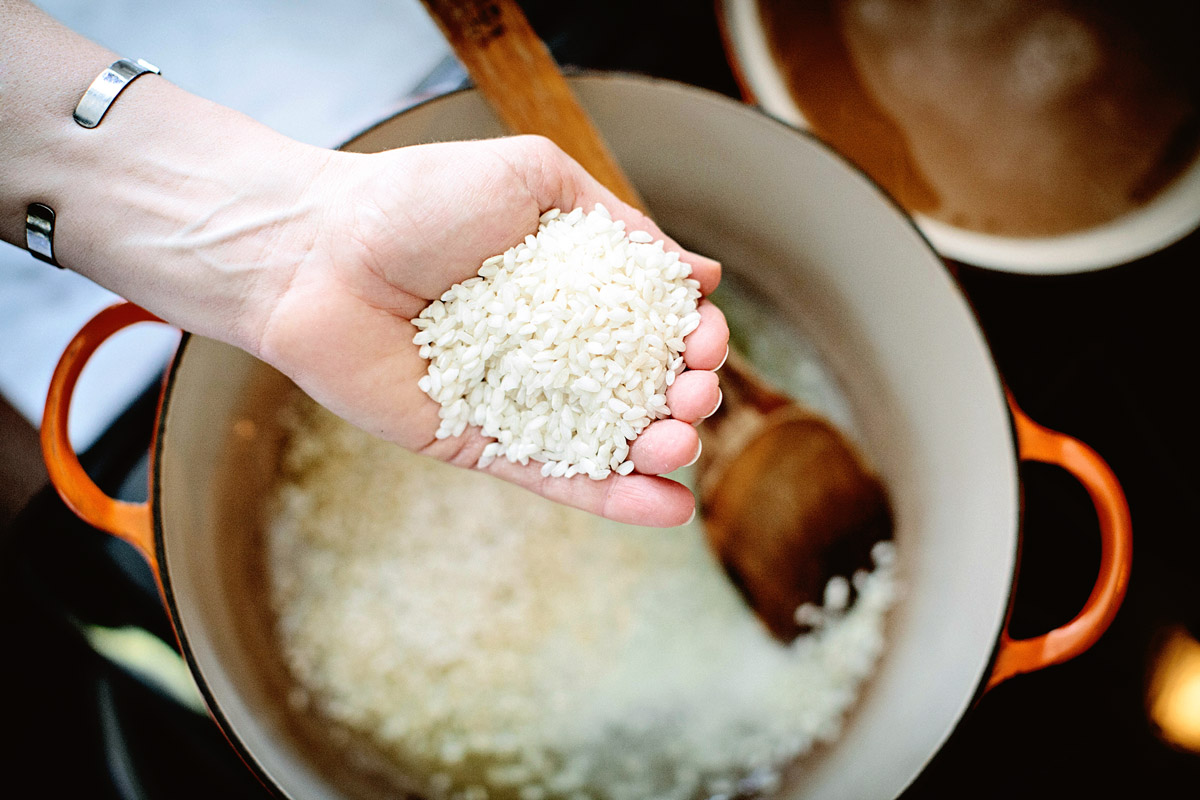
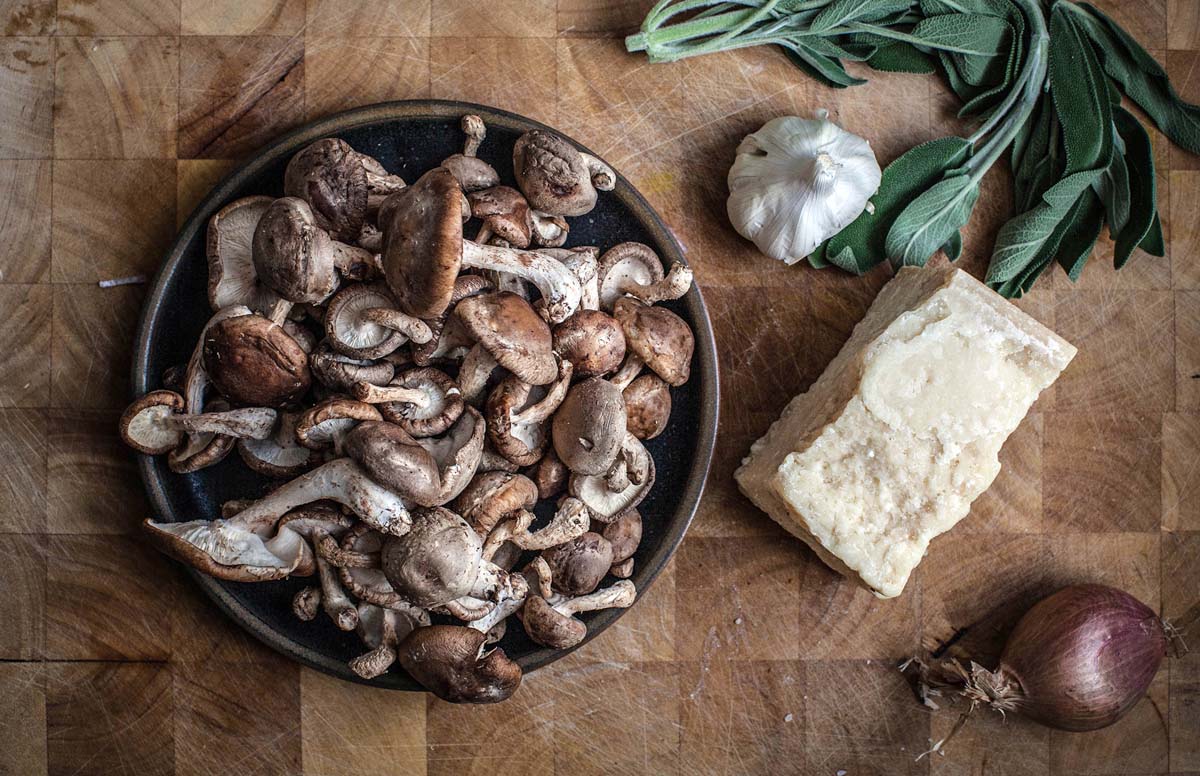
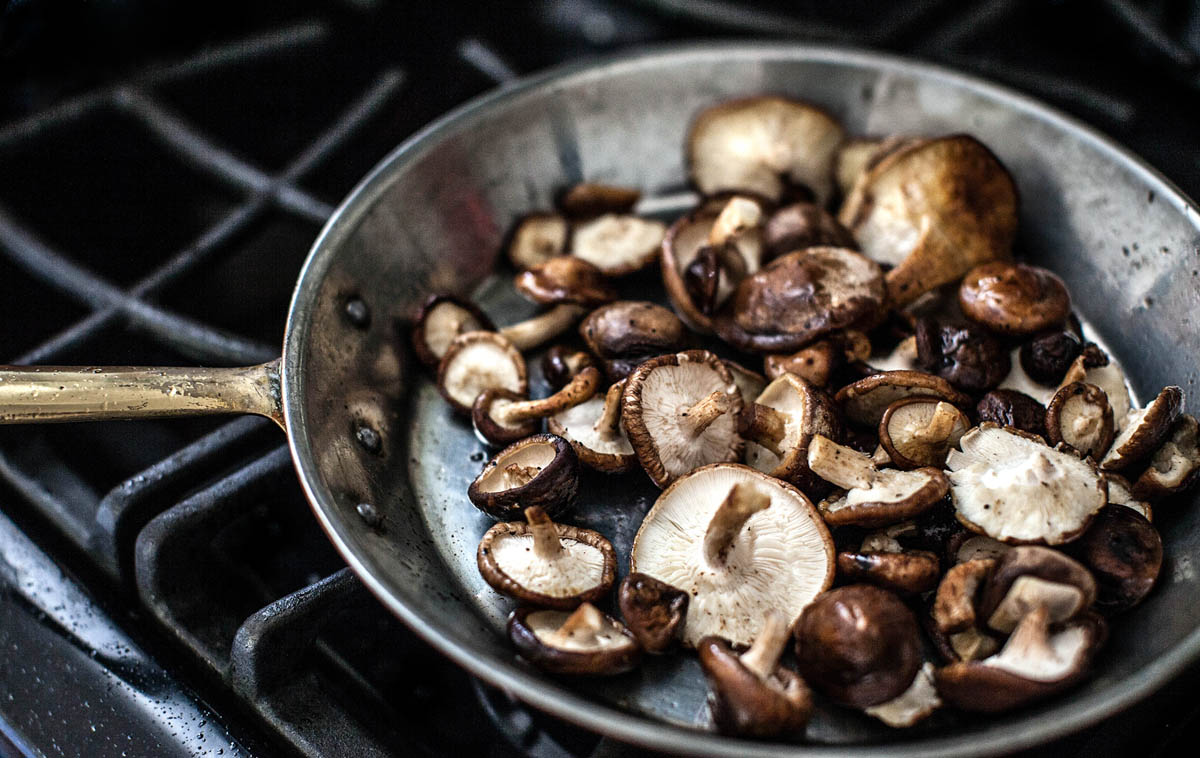
Mushroom & Sage Risotto10 ounces fresh mushrooms. Either Baby Shittake, Porcini or Cremini.
|
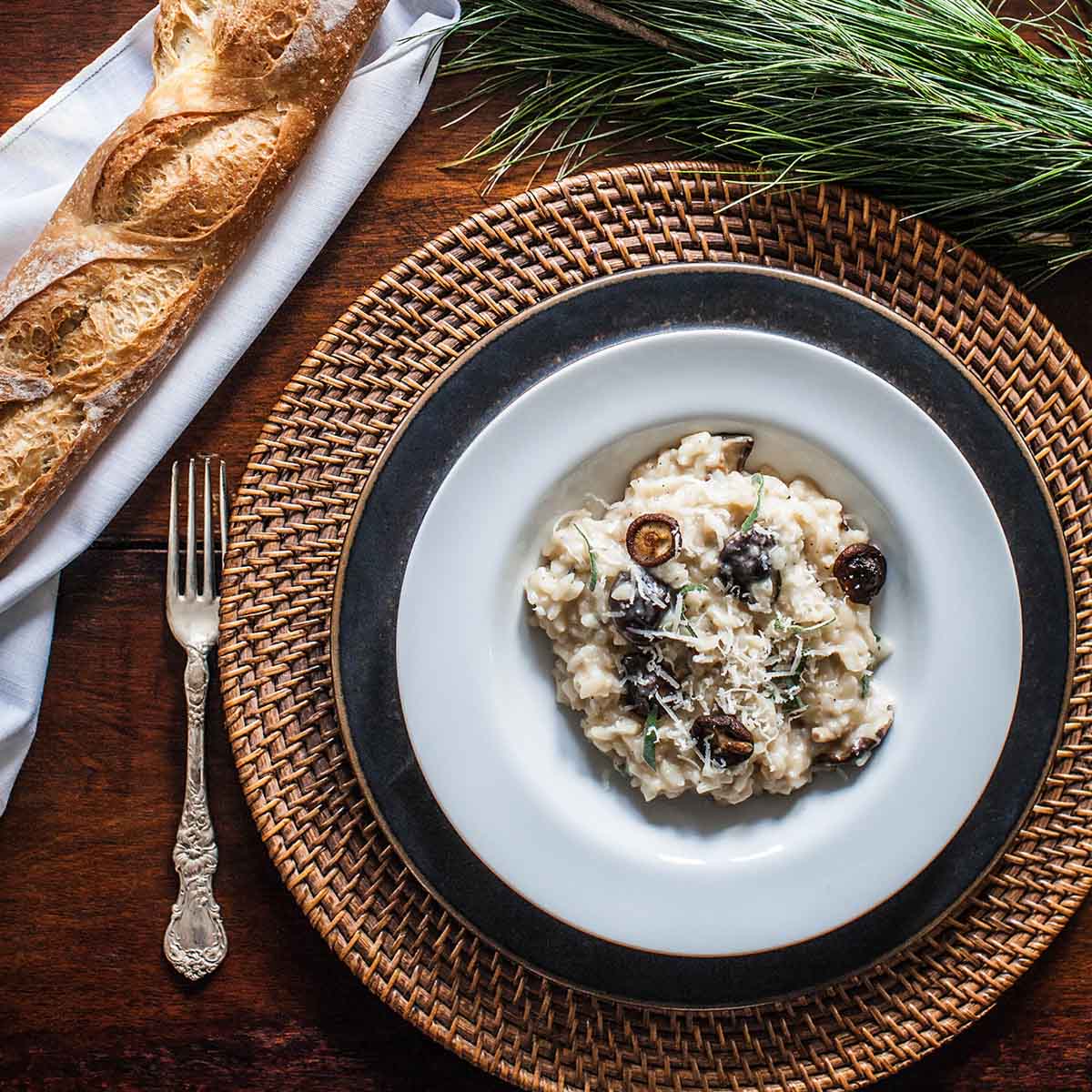

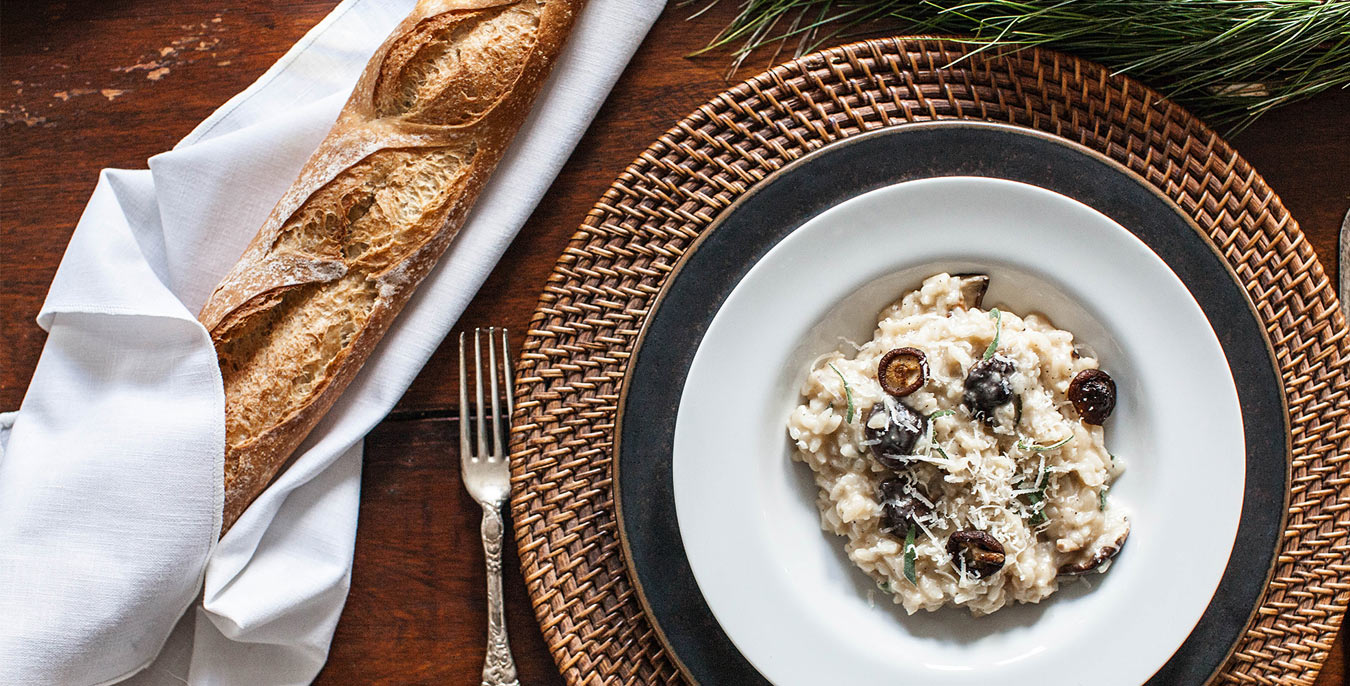

Our comments section is for members only.
Join today to gain exclusive access.